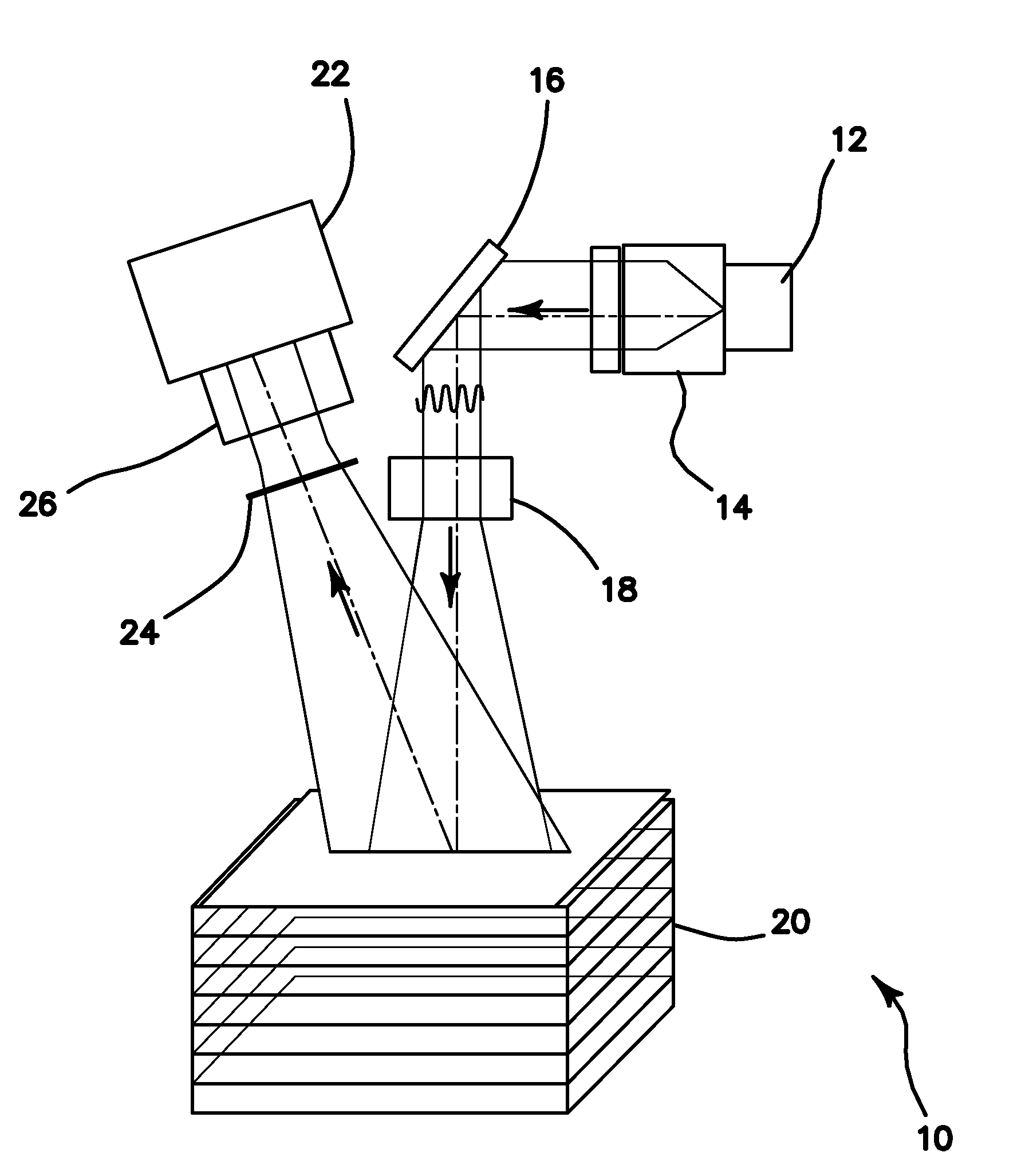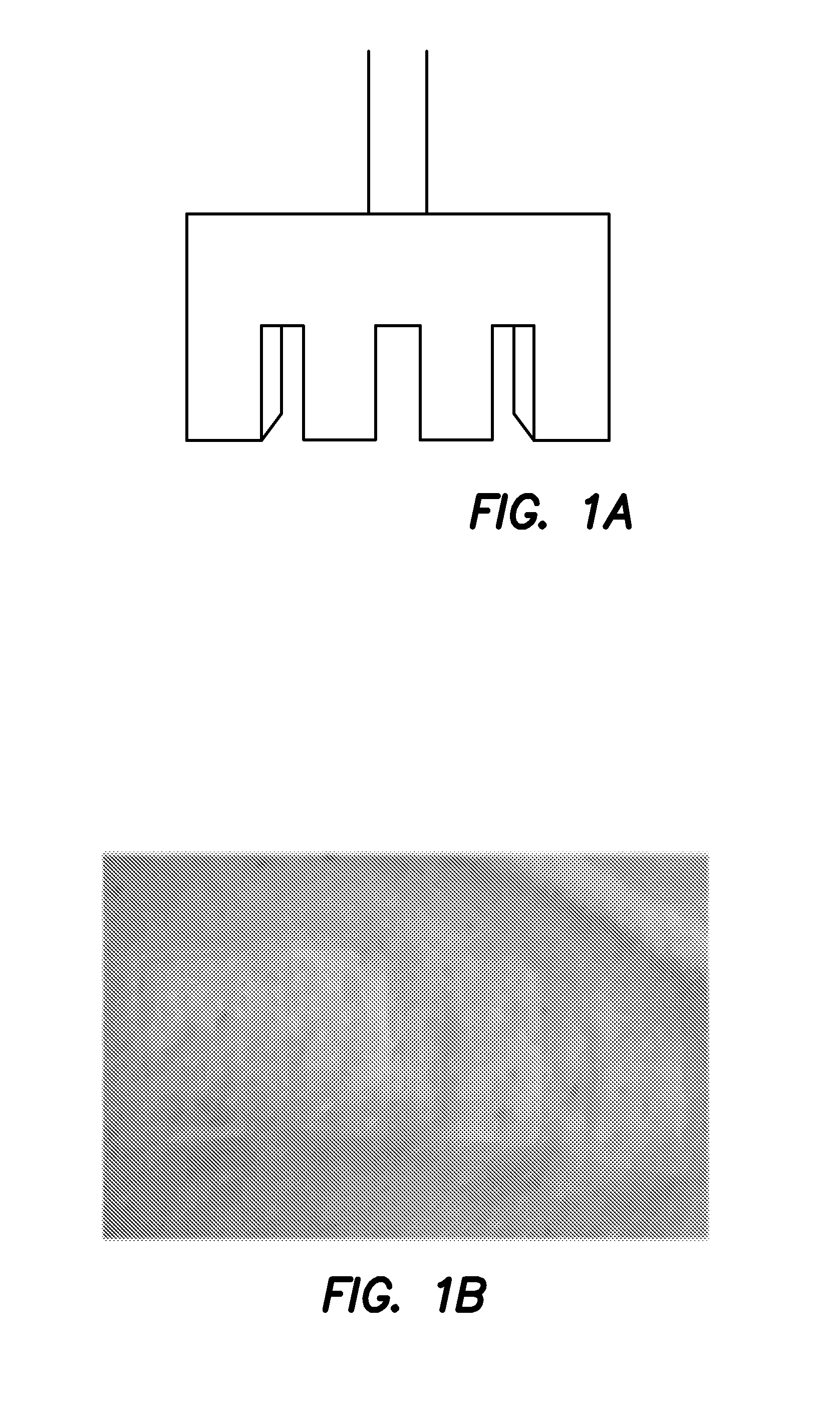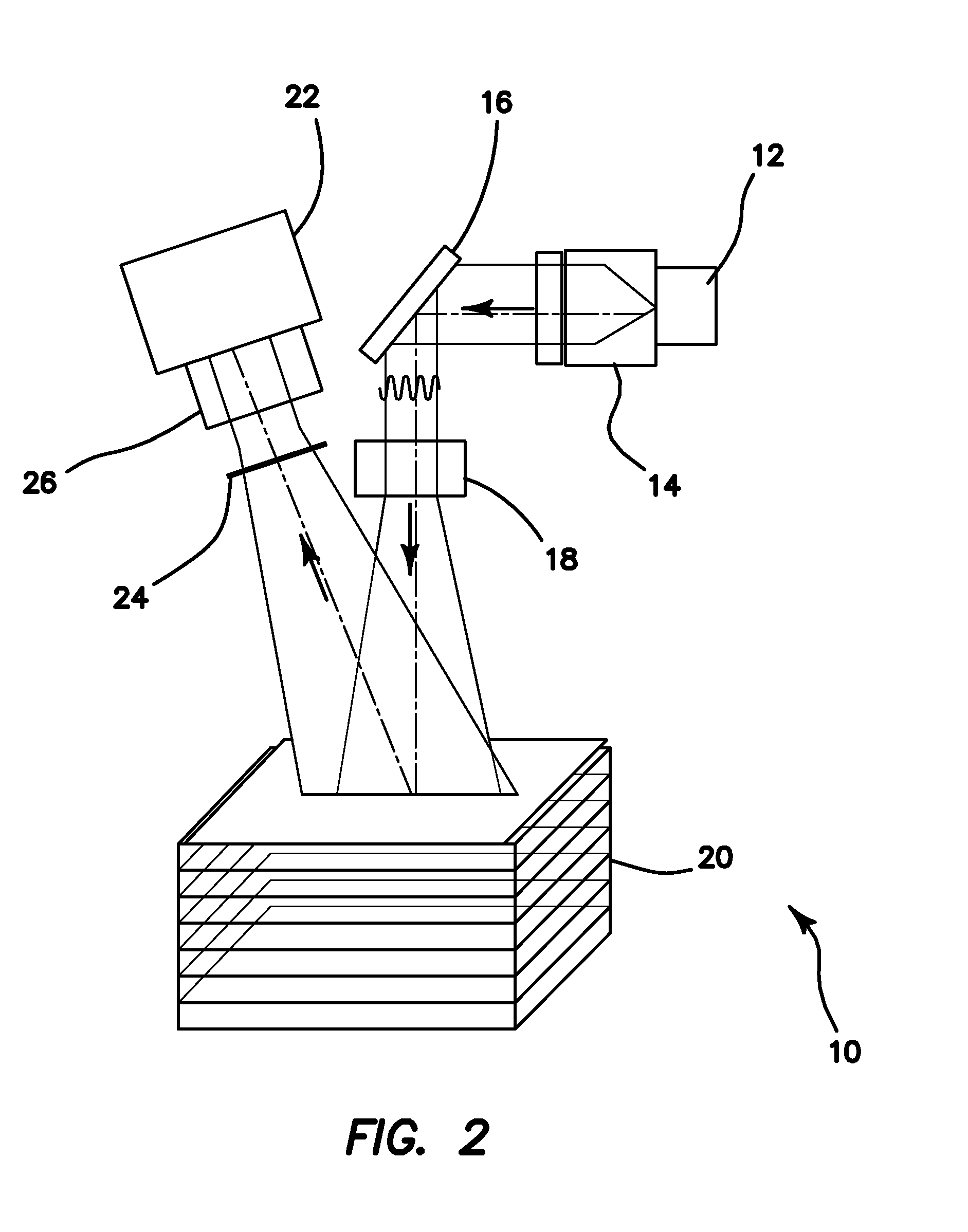Method and apparatus for performing qualitative and quantitative analysis of burn extent and severity using spatially structured illumination
a spatial structure and intensity analysis technology, applied in image enhancement, instruments, diagnostics using spectroscopy, etc., can solve the problems of ischemia and necrosis, and the most difficult to assess are partial thickness burns, and achieve the effect of reducing scattering parameters
- Summary
- Abstract
- Description
- Claims
- Application Information
AI Technical Summary
Benefits of technology
Problems solved by technology
Method used
Image
Examples
Embodiment Construction
[0060]In the illustrated embodiments we use SFDI in order to quantitatively evaluate burn wound seventies in a rat model. The objective is to map quantitative changes in spatially resolved tissue oxygenation, water concentration, and reduced scattering that may be indicative of burn wound severity and relate these changes to burn severity as reported by hematoxylin and eosin (H&E) histology.
[0061]Seventeen male Sprague-Dawley rats, weighing 350 to 600 g, used in the study of the illustrated embodiment of the method. Burn injuries were created using a previously established heated “brass comb” shown in FIG. 1a. The custom-made comb weighed 313 g and consisted of four notches measuring 1×2 cm2 separated by 0.5 cm gaps. On the day before experiments, each rat was shaved along the lateral dorsal region of the body using electric clippers and depilated with Nair (Church and Dwight, Princeton, N.J.). During experiments, the rats were anesthetized using an intraperitoneal injected mixture ...
PUM
 Login to View More
Login to View More Abstract
Description
Claims
Application Information
 Login to View More
Login to View More - R&D
- Intellectual Property
- Life Sciences
- Materials
- Tech Scout
- Unparalleled Data Quality
- Higher Quality Content
- 60% Fewer Hallucinations
Browse by: Latest US Patents, China's latest patents, Technical Efficacy Thesaurus, Application Domain, Technology Topic, Popular Technical Reports.
© 2025 PatSnap. All rights reserved.Legal|Privacy policy|Modern Slavery Act Transparency Statement|Sitemap|About US| Contact US: help@patsnap.com



